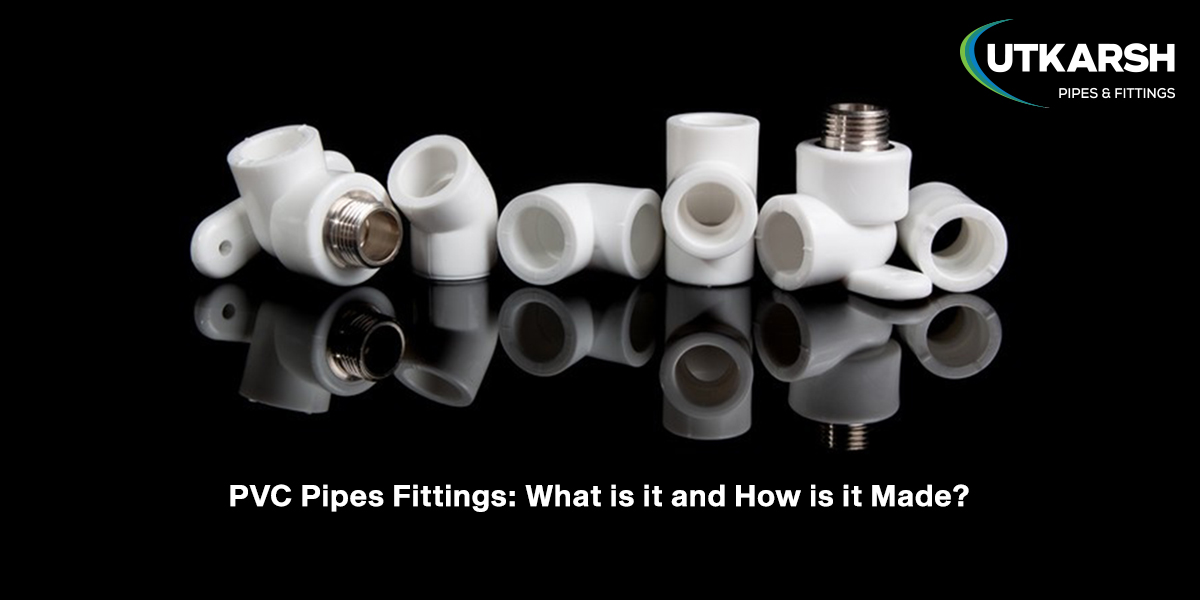PVC Pipes Fittings - What Is It and How Is It Made?

PVC pipes or Polyvinyl Chloride pipes are popular applications in sewage pipes and main water lines. These pipes have replaced pipes due to their innumerable benefits such as being easy to install, lightweight and durable. This makes them cost-efficient, long-lasting, and sustainable water pipes.
PVC is a thermoplastic material that can be molded into any shape and design. These pipes are recyclable and do not produce any toxic chemicals. PVC pipes are the right fit for water transportation and drainage solution.
What Is Polyvinyl Chloride Pipes (PVC) ?
Polyvinyl is a man-made plastic in which additives and stabilizers are added to get the desired quality from the polymer. This polyvinyl polymer is then converted into the form of pipes better known as PVC pipes. PVC pipes are in use since the 1950s. Today, more than 2 million PVC pipes are in service.
PVC is resistant to oxidation and corrosion. The PVC pipes are highly durable, they can last more than 50 years when installed properly. During improper installation, the solvent joints or tree joints get burrowed into the way of pipe’s connection leading to damage of pipe and failure in durability.
How are PVC Pipes Made?
1. When the PVC pipes are made, these are the main steps that are followed.
2. A PVC twin-screw extruder is used to feed raw materials powder/ pellets.
3. Heating and melting are performed in several extruder zones.
4. Then it is shaped in the form of a pipe with the help of a die extruder.
5. The shaped pipe is then cooled.
6. Different PVC pipes are cut according to the needs.
Related: How Are PVC Pipe Fittings Made?
PVC Pipes Uses :
Water Supply
The PVC pipes are lightweight, durable, strong, and low reactive. These properties make them an ideal choice for water distribution applications. The PVC pipe fittings have a maximum threshold temperature thats why used hot water lines.
Drainage
PVC pipes are resistant to wear-tear and rust. They are also leak-resistant and have the ability for under loading without breaking apart. This is why PVC pipes are widely used in sanitary applications and underground plumbing.
Chemical Industry
The PVC pipes are resistant to seawater, alkalis, salts, and acids. It is widely used in the chemical industry for transporting hazardous chemicals.
What Are The Advantages Of Using PVC Pipes Fittings?
1. PVC Pipes offer very little friction to the flowing liquids. Also, the smooth surface of the pipes makes it a good choice to supply different liquids and is used in an array of industries.
2. Its lightweight nature helps in the process of transportation. This saves valuable money and time.
3. Highly pocket-friendly and readily available.
There are different sizes of PVC pipes available. Utkarsh India has the best quality product that meets your needs, and most prominently, fits your pocket. Utkarsh pipes have state-of-the-art technology and employ the latest technology to make high-performance products. Also, the products available are known to meet the national and international quality standards.